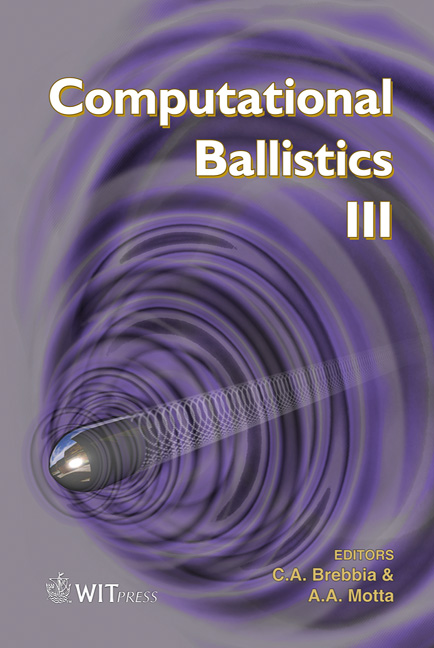Stochastic Study Of 60-mm Gun-projectile Responses
Price
Free (open access)
Transaction
Volume
45
Pages
10
Published
2007
Size
2,064 kb
Paper DOI
10.2495/CBAL070071
Copyright
WIT Press
Author(s)
M. Chen
Abstract
Gun propulsion modeling has been under development for many decades. Starting from lumped parameter computer code, then 1D and 2D approaches and finally by multi-dimensional and multi-phase interior ballistics codes, one has been able to estimate in-bore pressure-time history at a fairly accurate level. However, some underlying assumptions among the models exhibit certain levels of uncertainties, for instance: the time-varying friction between obturator and bore surface; the granular shape variations of propellant charges; the packaging deviations of each propellant load, etc. This study was to investigate in-bore responses of a 60-mm projectile subjected to the inherent randomness of propulsion pressures. The pressure-time curve was modeled with 47 Gaussian variables. A total of 100 pressure samples were then generated through Monte Carlo simulation techniques. Subsequently, the time histories of the highest in-bore velocity, peak acceleration and the maximum von Mises stress responses of the projectile were obtained respectively corresponding to each pressure simulation. The goals were to gain more understanding of how the projectile performs in response to the changes of chamber pressures, and how much variation of the responses should be expected from experimental results under normal circumstances. The significance of the random variables on the projectile responses was outlined as well. Keywords: interior ballistics, 60-mm projectile, IBHVG2, Monte Carlo simulation, stochastic responses. 1 Introduction The modeling of complex gun propulsion schemes has evolved at a great stride over the past two decades. In the mid 1980s, a lumped-parameter computer code IBHVG2 (Interior Ballistics of High Velocity Gun, version 2), developed by the
Keywords
interior ballistics, 60-mm projectile, IBHVG2, Monte Carlo simulation, stochastic responses.




